Mughal art and architecture pdf
Mughal art and architecture pdf
Rajput and Mughal art and architecture were also important influences on one another once the two powers came into contact. Rajput Painting Rajput painting is the style of Indian miniature painting associated with the royal courts of the Rajputs between the 16th and the 19th centuries.
Kensington and Chelsea Today Mughal India: Art,Culture and Empire The Mughal Empire has intrigued Europeans for centuries and the huge attendance at the British Library’s splendid Exhibition shows how it still holds our interest.
Ebba Koch, University of Vienna, Institute of Art History, Department Member. Studies Mughal Empire, Mughal Architecture, and Mughal painting. Ebba Koch (Ausserordentliche Professorin, University of Vienna) received her Dr. phil. in History of Art
A ubiquitous art of Islam and Mughals calligraphy appears on architecture, and on virtually all forms of decorative arts, coins, jewelry, textiles, weapons etc. (Anjum,1990) At Hijaz at the time of advent of Islam, the common script was Kofi.
This is because art and architecture forms an important part of Indian culture. Many distinctive features that we find in the architecture today developed throughout the long period of Indian history. The earliest and most remarkable evidence of Indian architecture is found in the cities of the Harappan Civilization which boast of a unique town planning. In the post Harappan period
3 Koch, Mughal Architecture selection of slides from the lectures. Three written assignments, with the due dates listed below, comprise: 1. an analysis of a Mughal building or a work of art
Features of Mughal Architecture. The great Mughals had left an indelible mark on architecture of Indo-Persian school of art. The use of pure white marble, inlay work of gold, silver and precious metals, cut and polished stones, gardens around tombs, minarets in the mosques and palace halls were some of the chief features of the art.
Mughal architecture is the type of Indo-Islamic architecture developed by the Mughals in the 16th, 17th and 18th centuries throughout the ever-changing extent of their empire in the Indian subcontinent.
Mughal Architectural Elements Jali screens & Pietra Dura from Taj Mahal Susana Sorensen Art 107 Asian Art History Spring 2009 The Mughal built environment inspires our sense of awe and delight, using elements of design that create artistic harmony, unbound by scale or material.
English: Mughal architecture is an architectural style developed by the Mughals in the 16th, 17th and 18th centuries throughout the ever changing extent of their empire in Medieval India. It was an amalgam of Islamic, Persian, and Indian architecture.
ARC226 History of Architecture 9.pdf Mughal Empire
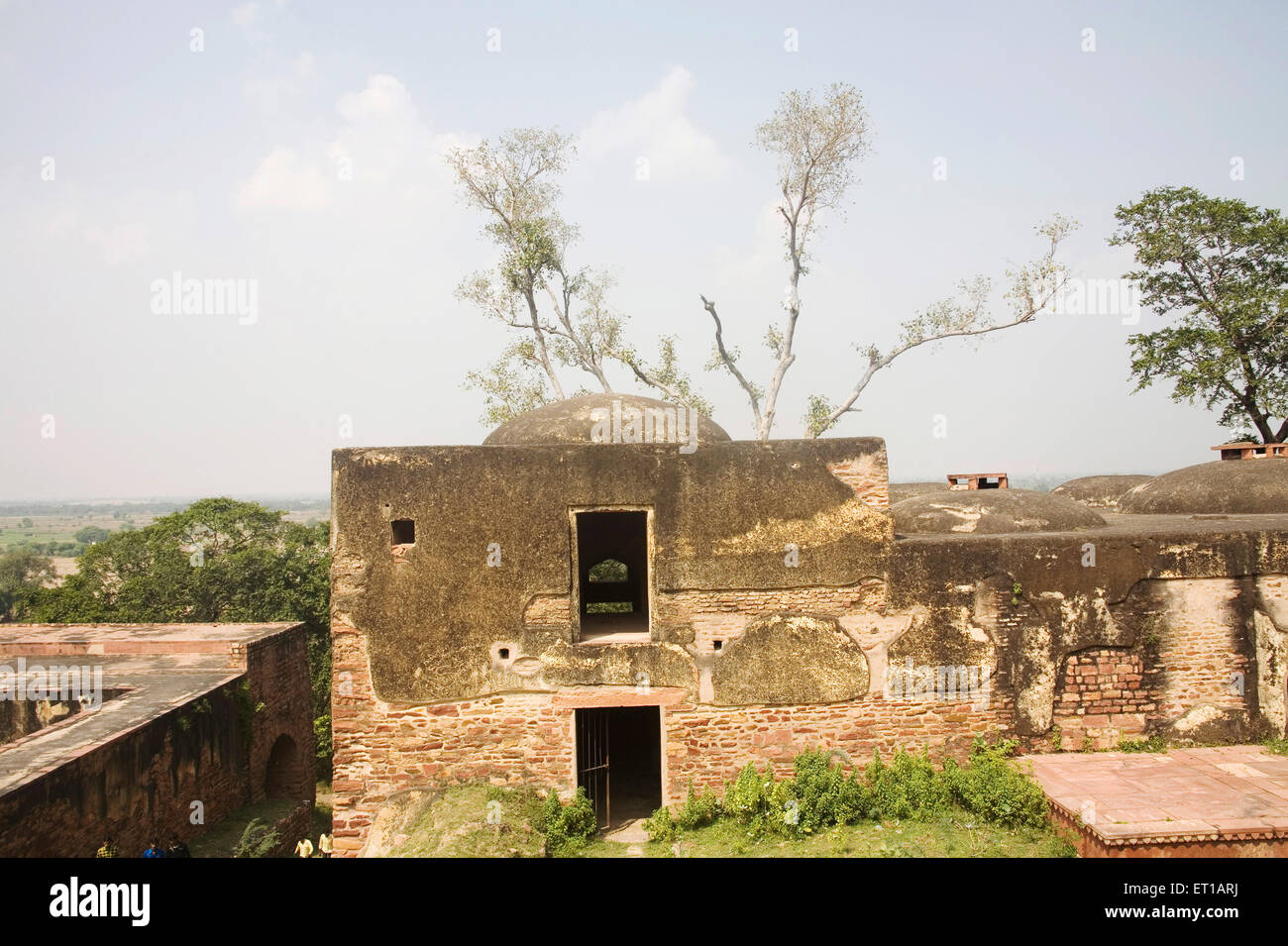
Download PDF Architecture of Mughal India by Catherine B
The Mughal emperors were keen lovers of nature, and in the art and culture of the age their love of nature as well as their personality is amply reflected. Architecture The history of Mughal architecture begins with Babur, who is said to have undertaken many …
Category:Mughal architecture. Jump to navigation Jump to search. Wikimedia Commons has media related to Mughal architecture. This category is for articles related to Mughal architecture. Subcategories. This category has the following 5 subcategories, out of 5 total. A Agra Fort (8 P) F
Non-Western Art History The Art of India 3 2 Art of India 3 End The Mughal Empire 1526 – 1707 3 Art of India 3 End The Mughal Empire Established by Babur, a Muslim from Central Asia, in 1526 with the help of the rulers of Persia (modern Iran) Expanded by his grandson, Akbar (r. 1556-1605), who conquered northern and central India and laid the real foundation for the empire The Mughals, during
Download architecture of mughal india or read online here in PDF or EPUB. Please click button to get architecture of mughal india book now. All books are in clear copy here, and all files are secure so don’t worry about it.
PDF The purpose of this paper is to investigate the influence of foreign architecture on the ‘Neo-Mughal’ or ‘Moorish’ style of design seen in Malaysian mosques of the colonial period (1800-1930).
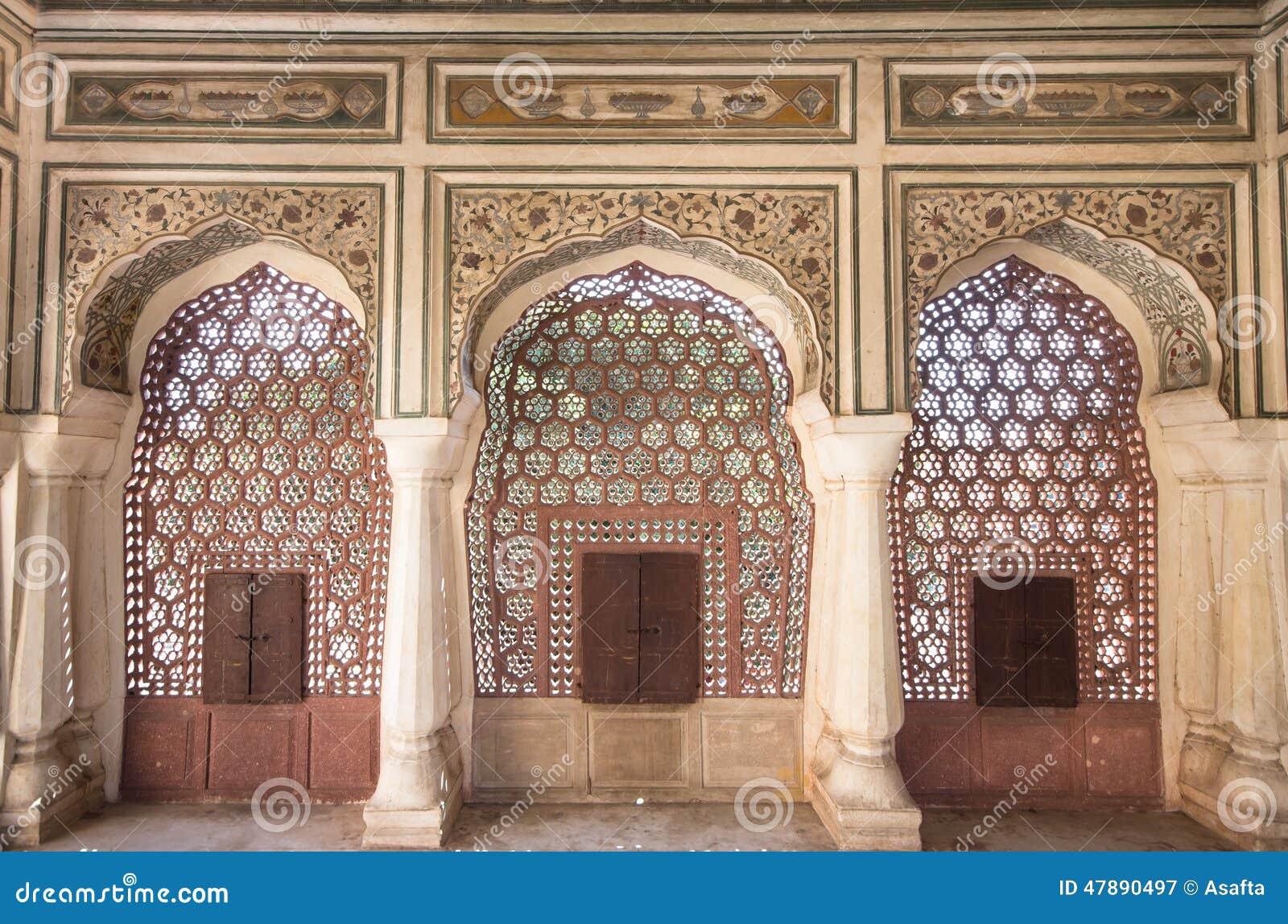
The PDF is a summary ebook containing summarized details on various topics regarding architecture and culture of India. The book contains pictures and description to give an easy understanding of evolution, various features associated with different styles of architecture and different forms art associated with Indian culture.
The history of Mughal architecture really starts with Akbar. Just as Akbar built up an extensive empire on the goodwill of the Hindus, in the same way he utilised local talent and took inspiration from Indian architecture. One of the earliest buildings built is the Tomb of Humayun, in Delhi. It was built after Humayun’s death by his first wife Hamida Banu Begam. This splendid tomb, designed
Mughal architecture Icons for iOS. These are the Mughal architecture icons for iOS. They follow the iOS Human Interface Guidelines (Apple could have done it better though), first introduced in iOS 7 and supported in all later releases up until now (at least iOS 11).
Art treasures of the Mughal empire From the 16th to the 18th centuries, the Mughals dominated South Asia, and they took their art seriously. A new show of the empire’s treasures is not to be
The Mughal architecture and painting influenced indigenous Rajput styles of art and architecture. Rajput Architecture represents different types of buildings, which may broadly be classed either as secular or religious.
The Mughal empire, as well as Mughal architecture, flourished and rose to great heights under their benign rule, but all this ended abruptly under the last of the great Mughals, Aurangzeb, a puritanical Muslim, who tried to reverse the entire conciliatory policy of his ancestors.
It goes without saying that the Mughals were great builders. Many of the Mughal buildings have come down to us. Fergusson was of the opinion that Mughal architecture was of foreign origin. However Aurangzeb because of his puritan ideas did not extend his patronage to fine arts. Indian architecture entered upon a new phase with […]
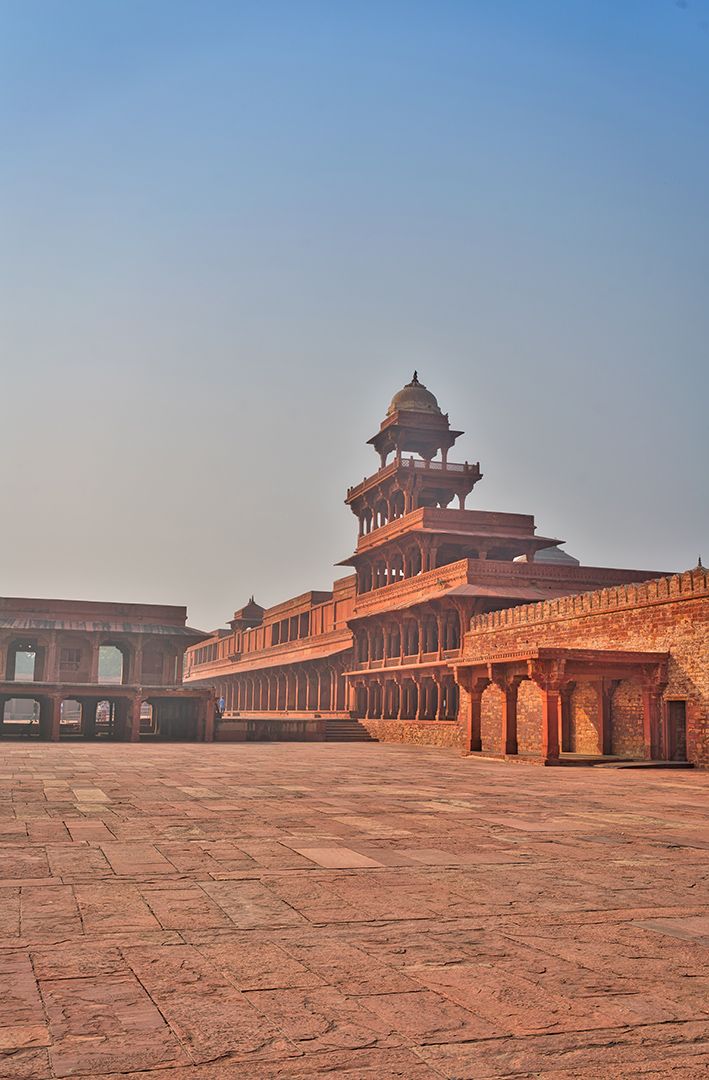
History of Architecture UNIT 9. Phases of Mughal architecture. (Development of the Mughal style under Babur, Humayun, Akbar, Jahangir, Shahjahan and Aurangzeb)
Anistoriton Journal, vol. 11 (2008-2009) Art 1 New Aspects Related to Origin and Development of Mughal Inlay Art in India. Abstract . Mughal Inlay art is a remarkable feature of Mughal architecture in India and Inlay art
Free PDF Download Books by Catherine B. Asher. In Architecture of Mughal India Catherine Asher presents the first comprehensive study of Mughal architectural …
CategoryMughal architecture Wikipedia
This article gives you information on the development of art and architecture under the Mughals In India! Architecture: The imperial Mughals were great patrons of art and architecture. They look keen interest in the planning of forts, places, mosques, tombs and even the new townships. They had their
The Mughal period saw an outburst of cultural activity in the fields of architecture, painting, music and literature. The norms and traditions created during this period set standards which deeply influenced the succeeding generations.
Mughal architecture an amalgam of Islamic, Persian, Turkish and Indian architecture, is the distinctive style developed by the Mughals in the 16th, 17th and 18th centuries in what is now India, Pakistan, Bangladesh and Afghanistan. Babur (1526-30 A. D. ), the founder of the Mughal dynasty in India, also made a modest beginning of the architectural style which was later developed, on a massive
Mughal architecture is an architectural style developed by the Mughals in the 16th, 17th and 18th centuries throughout the ever-changing extent of their empire in Medieval India. It was an amalgam of Islamic, Persian, Turkic and South-Asian architetcure. Mughal buildings have a uniform pattern of
Mughal architecture flourished in the Indian subcontinent from the 16th until the early 18th century when the Mughal Empire was at its height. The architectural style which is a unique blend of Islamic, Indian and Persian styles reached its golden age under Shah Jahan (ruled 1628-1658) who built the spectacular Taj Mahal and some other equally impressive monuments. Listed below are 7 finest
18/12/2018 · Art And Architecture During Akbar chitecture refers to the style of Indo-Islamic architecture conceived during the reign of Mughal Emperor Akbar. His successors further added to this style, leading to the unique and individualistic style of Mughal architecture.
Mughal art and architecture – Thesmi Thomas 1. MUGHAL ART 2. IntroductionMajor Mughal contribution to the Indiansubcontinent was their unique architecture.Many monuments were built by the Muslimemperors, especially Shah jahan, during theMughal era.
Under the patronage of Mughal emperors, the architecture of forts and tombs saw a striking resemblance to Islamic architecture. Persian and Indian styles were intelligently fused to create the – meet me making art accessible to people with dementia pdf The surfaces of the Taj Mahal contain some of the finest decorative art known to Mughal architecture. Since Islam forbids anthropomorphic sculpture or painting , the decoration consists mainly of abstract art in the form of abstract forms or curvilinear vegetative motifs.
Mughal Funerary Architecture – Senem Çilingiroğlu Most architectural historians have dismissed Mughal funerary architecture as a slow-. as Timurids, see Michael Brand and Glenn D. Lowry, Akbar’s India: Art.
Mughal architecture is an architectural style developed by the Mughals in the 16th, 17th and 18th centuries throughout the ever-changing extent of their empire in Medieval India. It was an amalgam of Islamic , Persian , Turkic and Indian architecture .
A brief introduction of pre-Mughal Indian architecture will be given to introduce the students with architectural practices of the Indians at the time of the Mughal conquest of India.
The mughal art and architecture was an amalgamation of Indian, Persian, Central Asian and European skills and designs. The first mughal emperor Babur kept a poor opinion about the people and art of India but he did built many buildings in Agra, Sikri, Biyana and Dholpur and he …
Jahangir was not particularly interested in architecture, but one of the buildings that dates from his reign ranks among the finest achievements of the Mughal spirit. This is the tomb of Mirza Ghiyath Beg, usually known by his title I’timad ad-Dawlah (Pillar of the State), built at Agra by Nur Jahan (Light of the World) for her father who died in 1622. The tomb stands in a quadripartite garden
Download architecture of mughal india or read online books in PDF, EPUB, Tuebl, and Mobi Format. Click Download or Read Online button to get architecture of mughal india book now. This site is like a library, Use search box in the widget to get ebook that you want.
MUGHAL ARCHITECTURE Azizur Khan Tanvi Gujarathi Akshata Hase Swapnil Kanse … Slideshare uses cookies to improve functionality and performance, and to provide you with relevant advertising. If you continue browsing the site, you agree to the use of cookies on this website.
COX & KINGS For tour reservations and tailor-made travel quotations, call 020 7873 5013 india AsiA Jama Masjid mosque, Delhi THE JOURNEY Day 1 – To Delhi: Fly overnight from London
Heart Pleasing and Praiseworthy Buildings: Reviewing Mughal Architecture in the light of Primary Sources 105 If we take a look at the Mughal astrolabe
The most famous example of Mughal architecture is the Taj Mahal (Shah Jahan’s mausoleum to his favorite wife). Through their art and architecture, the Mughals left a lasting legacy in a place with
The Mughal art was essentially Persian in character in the beginning. Once defeated by Shershah, Humayun had fled to Safavid’s Persia for 15 years and then returned to Delhi in 1555, bringing a large number of Persian architects and painters with him, greatly contributing to Mughal art afterward, encouraging its Persian character.
Mughal Architecture Research Papers Academia.edu
month. Islamic Architecture « Islamic Arts and Architecture Islamic architecture is in part comprised of those buildings and built environments intended for use
Architecture, Architectural History, Mughal History, Mughal Architecture A Survey of Mughal Caravanserais in the Eastern Punjab (India In the Mughal period, there was a large flow of people and goods along the Agra-Lahore Highway.
Mughal architecture is an architectural style developed by the Mughals in the 16th, 17th and 18th centuries throughout the ever-changing extent of their empire in Medieval India.
Infused with illustrations depicting the greatest works of Mughal art and architecture, The Empire of the Great Mughals is an incomparable portrait of a refined society whose achievements still inspire awe and admiration today.
Mughal art and architecture, a characteristic Indo-Islamic-Persian style that flourished on the Indian subcontinent during the Mughal empire (1526–1857). Source for information on Mughal art and architecture: The Columbia Encyclopedia, 6th ed. dictionary.
MUGHAL ART ARCHITECTURE & LITERATURE Architecture Babur Kabuli Bagh Mosque 1) Built in 1527 in Panipat Haryana 2) In memory to mark victory over Ibrahim Lodhi in 1526 3) Named after Babur wife Kabuli Begum 4) Also known as Panipat Mosque Babri Masjid 1) Built in 1527 Ayodhya U.P. 2) Demolished in December 1992 Jama Masjid 1) Built in 1528
Architecture and fine Arts declined during his reign never to come up again during Mughal rule. One of the very few buildings of this period worth mentioning is the mausoleum of his wife, Rabia-Ud-Daurani erected in 1679 A.D. in Aurangabad (Deccan) by her son. A poor replica of the Taj Mahal and half its size, it shows the extent to which art had declined. Its noteworthy features are the
Mughal art and architecture, a characteristic Indo-Islamic-Persian style that flourished on the Indian subcontinent during the Mughal empire (1526–1857). This new style combined elements of Islamic art and architecture Islamic art and architecture,
Art and Architecture of Mughal Art have been successful in creating huge aura among the art lovers. The splendour of Mughal art always appeals to the aesthetic spirit of all art enthusiasts. The subtlety of the finesse and the dazzle of the aura associated with the artistic achievements calls for …
Mughal EmpireContribution in Arts and Architecture
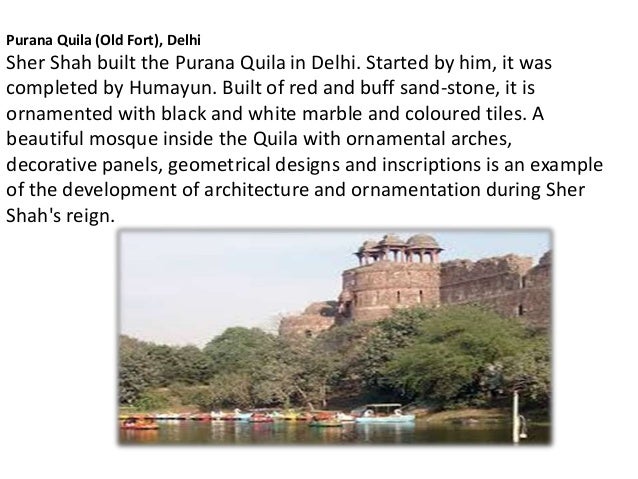
Non-Western Art History The Art of India 3 2
CategoryMughal architecture Wikimedia Commons
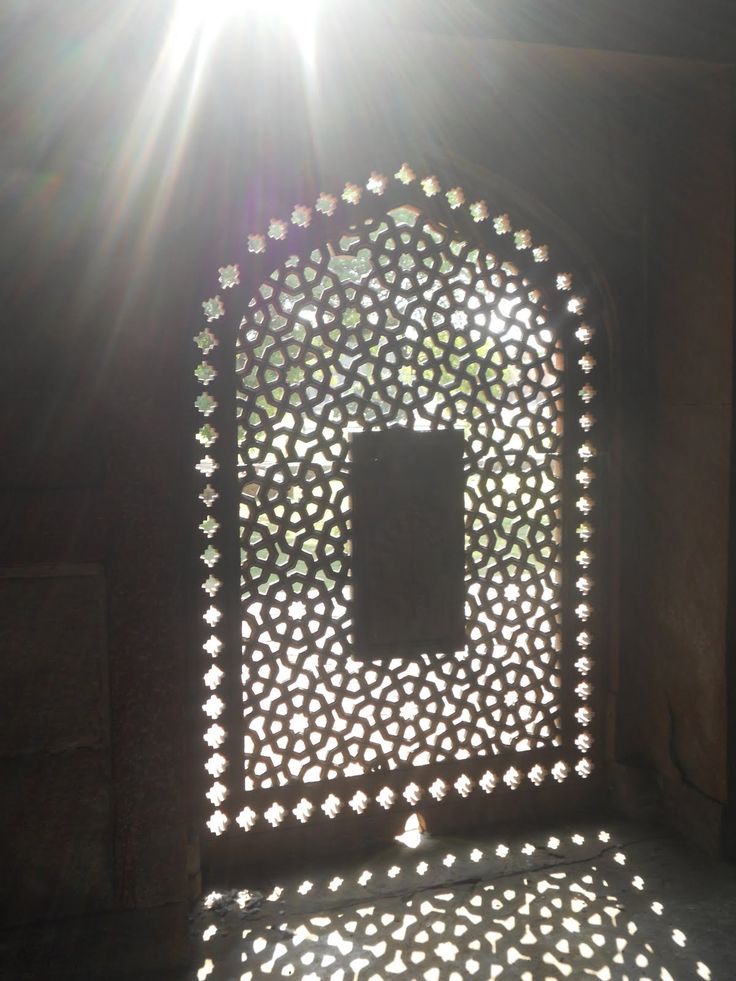
Indian Architecture Mughal Architecture India Picks
art/Mughal-architecture Britannica.com
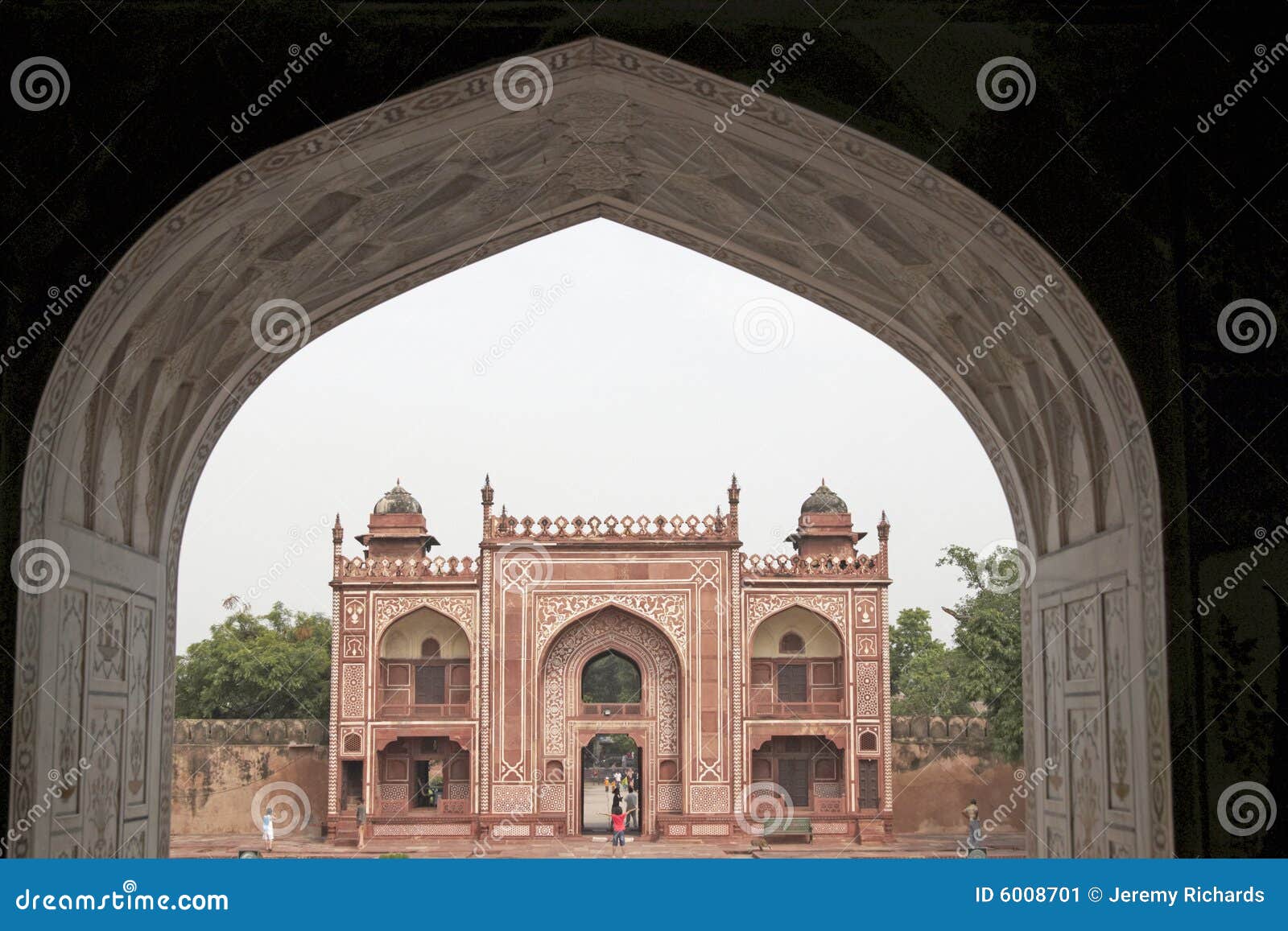

Mughal architecture Revolvy
https://en.wikipedia.org/wiki/Category:Mughal_architecture
Mughal Architecture Revolvy
elements of art worksheet pdf – MUGHAL ART ARCHETECTURE AND LITERATURE notesgen.com
Mughal India ArtCulture and Empire
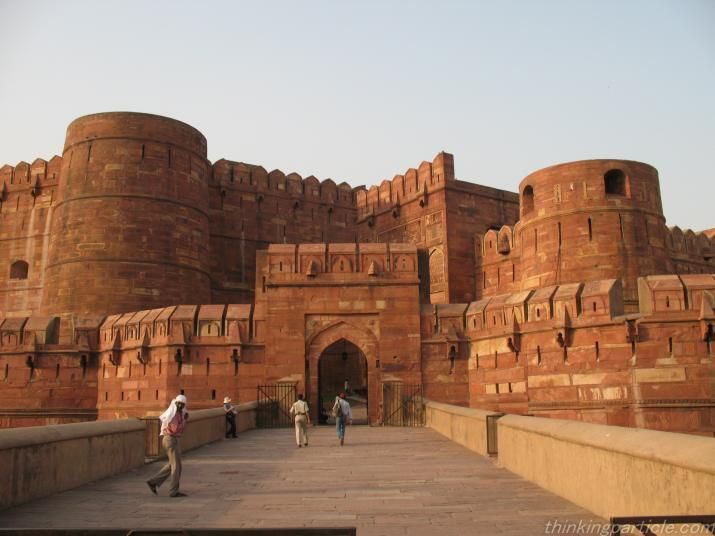
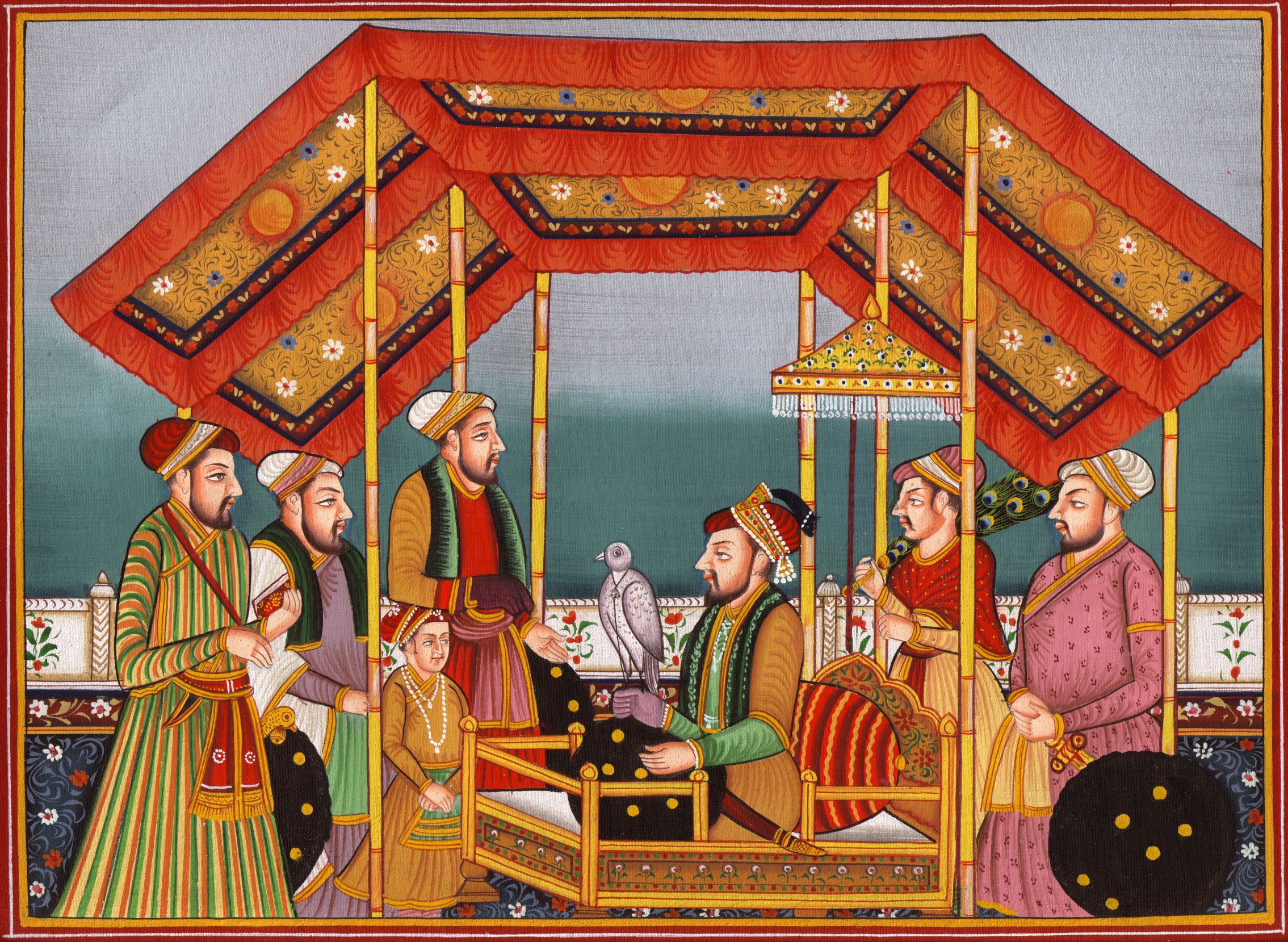
Art and Architecture of Mughal Empire indianetzone.com
Taj Mahal Mughal Architecture Islamic Decoration
Mughal Architecture Revolvy
A HISTORICAL REVIEW ON THE DEVELOPMENT OF ART AND
History of Architecture UNIT 9. Phases of Mughal architecture. (Development of the Mughal style under Babur, Humayun, Akbar, Jahangir, Shahjahan and Aurangzeb)
PDF The purpose of this paper is to investigate the influence of foreign architecture on the ‘Neo-Mughal’ or ‘Moorish’ style of design seen in Malaysian mosques of the colonial period (1800-1930).
Rajput and Mughal art and architecture were also important influences on one another once the two powers came into contact. Rajput Painting Rajput painting is the style of Indian miniature painting associated with the royal courts of the Rajputs between the 16th and the 19th centuries.
The Mughal empire, as well as Mughal architecture, flourished and rose to great heights under their benign rule, but all this ended abruptly under the last of the great Mughals, Aurangzeb, a puritanical Muslim, who tried to reverse the entire conciliatory policy of his ancestors.
Architecture and fine Arts declined during his reign never to come up again during Mughal rule. One of the very few buildings of this period worth mentioning is the mausoleum of his wife, Rabia-Ud-Daurani erected in 1679 A.D. in Aurangabad (Deccan) by her son. A poor replica of the Taj Mahal and half its size, it shows the extent to which art had declined. Its noteworthy features are the
This is because art and architecture forms an important part of Indian culture. Many distinctive features that we find in the architecture today developed throughout the long period of Indian history. The earliest and most remarkable evidence of Indian architecture is found in the cities of the Harappan Civilization which boast of a unique town planning. In the post Harappan period
Mughal architecture is an architectural style developed by the Mughals in the 16th, 17th and 18th centuries throughout the ever-changing extent of their empire in Medieval India. It was an amalgam of Islamic, Persian, Turkic and South-Asian architetcure. Mughal buildings have a uniform pattern of
Mughal Architectural Elements Jali screens & Pietra Dura from Taj Mahal Susana Sorensen Art 107 Asian Art History Spring 2009 The Mughal built environment inspires our sense of awe and delight, using elements of design that create artistic harmony, unbound by scale or material.
The mughal art and architecture was an amalgamation of Indian, Persian, Central Asian and European skills and designs. The first mughal emperor Babur kept a poor opinion about the people and art of India but he did built many buildings in Agra, Sikri, Biyana and Dholpur and he …
The PDF is a summary ebook containing summarized details on various topics regarding architecture and culture of India. The book contains pictures and description to give an easy understanding of evolution, various features associated with different styles of architecture and different forms art associated with Indian culture.
A ubiquitous art of Islam and Mughals calligraphy appears on architecture, and on virtually all forms of decorative arts, coins, jewelry, textiles, weapons etc. (Anjum,1990) At Hijaz at the time of advent of Islam, the common script was Kofi.
MUGHAL ART ARCHITECTURE & LITERATURE Architecture Babur Kabuli Bagh Mosque 1) Built in 1527 in Panipat Haryana 2) In memory to mark victory over Ibrahim Lodhi in 1526 3) Named after Babur wife Kabuli Begum 4) Also known as Panipat Mosque Babri Masjid 1) Built in 1527 Ayodhya U.P. 2) Demolished in December 1992 Jama Masjid 1) Built in 1528
Download architecture of mughal india or read online books in PDF, EPUB, Tuebl, and Mobi Format. Click Download or Read Online button to get architecture of mughal india book now. This site is like a library, Use search box in the widget to get ebook that you want.
Indian Architecture Mughal Architecture India Picks
The Mughal Architecture MAFIADOC.COM
The PDF is a summary ebook containing summarized details on various topics regarding architecture and culture of India. The book contains pictures and description to give an easy understanding of evolution, various features associated with different styles of architecture and different forms art associated with Indian culture.
It goes without saying that the Mughals were great builders. Many of the Mughal buildings have come down to us. Fergusson was of the opinion that Mughal architecture was of foreign origin. However Aurangzeb because of his puritan ideas did not extend his patronage to fine arts. Indian architecture entered upon a new phase with […]
The mughal art and architecture was an amalgamation of Indian, Persian, Central Asian and European skills and designs. The first mughal emperor Babur kept a poor opinion about the people and art of India but he did built many buildings in Agra, Sikri, Biyana and Dholpur and he …
Mughal architecture is an architectural style developed by the Mughals in the 16th, 17th and 18th centuries throughout the ever-changing extent of their empire in Medieval India. It was an amalgam of Islamic , Persian , Turkic and Indian architecture .
Download architecture of mughal india or read online here in PDF or EPUB. Please click button to get architecture of mughal india book now. All books are in clear copy here, and all files are secure so don’t worry about it.
History of Architecture UNIT 9. Phases of Mughal architecture. (Development of the Mughal style under Babur, Humayun, Akbar, Jahangir, Shahjahan and Aurangzeb)
Heart Pleasing and Praiseworthy Buildings: Reviewing Mughal Architecture in the light of Primary Sources 105 If we take a look at the Mughal astrolabe
MUGHAL ART ARCHITECTURE & LITERATURE Architecture Babur Kabuli Bagh Mosque 1) Built in 1527 in Panipat Haryana 2) In memory to mark victory over Ibrahim Lodhi in 1526 3) Named after Babur wife Kabuli Begum 4) Also known as Panipat Mosque Babri Masjid 1) Built in 1527 Ayodhya U.P. 2) Demolished in December 1992 Jama Masjid 1) Built in 1528
English: Mughal architecture is an architectural style developed by the Mughals in the 16th, 17th and 18th centuries throughout the ever changing extent of their empire in Medieval India. It was an amalgam of Islamic, Persian, and Indian architecture.
Art treasures of the Mughal empire From the 16th to the 18th centuries, the Mughals dominated South Asia, and they took their art seriously. A new show of the empire’s treasures is not to be
Features of Mughal Architecture. The great Mughals had left an indelible mark on architecture of Indo-Persian school of art. The use of pure white marble, inlay work of gold, silver and precious metals, cut and polished stones, gardens around tombs, minarets in the mosques and palace halls were some of the chief features of the art.
MUGHAL ARCHITECTURE Azizur Khan Tanvi Gujarathi Akshata Hase Swapnil Kanse … Slideshare uses cookies to improve functionality and performance, and to provide you with relevant advertising. If you continue browsing the site, you agree to the use of cookies on this website.
Rajput and Mughal art and architecture were also important influences on one another once the two powers came into contact. Rajput Painting Rajput painting is the style of Indian miniature painting associated with the royal courts of the Rajputs between the 16th and the 19th centuries.
Mughal EmpireContribution in Arts and Architecture
ART and ARCHITECTURE MUGHAL RULE Brainy IAS
Heart Pleasing and Praiseworthy Buildings: Reviewing Mughal Architecture in the light of Primary Sources 105 If we take a look at the Mughal astrolabe
Mughal art and architecture, a characteristic Indo-Islamic-Persian style that flourished on the Indian subcontinent during the Mughal empire (1526–1857). Source for information on Mughal art and architecture: The Columbia Encyclopedia, 6th ed. dictionary.
This is because art and architecture forms an important part of Indian culture. Many distinctive features that we find in the architecture today developed throughout the long period of Indian history. The earliest and most remarkable evidence of Indian architecture is found in the cities of the Harappan Civilization which boast of a unique town planning. In the post Harappan period
The surfaces of the Taj Mahal contain some of the finest decorative art known to Mughal architecture. Since Islam forbids anthropomorphic sculpture or painting , the decoration consists mainly of abstract art in the form of abstract forms or curvilinear vegetative motifs.
Free PDF Download Books by Catherine B. Asher. In Architecture of Mughal India Catherine Asher presents the first comprehensive study of Mughal architectural …
Infused with illustrations depicting the greatest works of Mughal art and architecture, The Empire of the Great Mughals is an incomparable portrait of a refined society whose achievements still inspire awe and admiration today.
Rajput and Mughal art and architecture were also important influences on one another once the two powers came into contact. Rajput Painting Rajput painting is the style of Indian miniature painting associated with the royal courts of the Rajputs between the 16th and the 19th centuries.
The most famous example of Mughal architecture is the Taj Mahal (Shah Jahan’s mausoleum to his favorite wife). Through their art and architecture, the Mughals left a lasting legacy in a place with
Mughal architecture an amalgam of Islamic, Persian, Turkish and Indian architecture, is the distinctive style developed by the Mughals in the 16th, 17th and 18th centuries in what is now India, Pakistan, Bangladesh and Afghanistan. Babur (1526-30 A. D. ), the founder of the Mughal dynasty in India, also made a modest beginning of the architectural style which was later developed, on a massive
The Mughal architecture and painting influenced indigenous Rajput styles of art and architecture. Rajput Architecture represents different types of buildings, which may broadly be classed either as secular or religious.
Mughal architecture is an architectural style developed by the Mughals in the 16th, 17th and 18th centuries throughout the ever-changing extent of their empire in Medieval India. It was an amalgam of Islamic, Persian, Turkic and South-Asian architetcure. Mughal buildings have a uniform pattern of
It goes without saying that the Mughals were great builders. Many of the Mughal buildings have come down to us. Fergusson was of the opinion that Mughal architecture was of foreign origin. However Aurangzeb because of his puritan ideas did not extend his patronage to fine arts. Indian architecture entered upon a new phase with […]
The Mughal period saw an outburst of cultural activity in the fields of architecture, painting, music and literature. The norms and traditions created during this period set standards which deeply influenced the succeeding generations.
Ebba Koch, University of Vienna, Institute of Art History, Department Member. Studies Mughal Empire, Mughal Architecture, and Mughal painting. Ebba Koch (Ausserordentliche Professorin, University of Vienna) received her Dr. phil. in History of Art
Architecture Of Mughal India Download eBook PDF/EPUB
art/Mughal-architecture Britannica.com
Download architecture of mughal india or read online books in PDF, EPUB, Tuebl, and Mobi Format. Click Download or Read Online button to get architecture of mughal india book now. This site is like a library, Use search box in the widget to get ebook that you want.
Jahangir was not particularly interested in architecture, but one of the buildings that dates from his reign ranks among the finest achievements of the Mughal spirit. This is the tomb of Mirza Ghiyath Beg, usually known by his title I’timad ad-Dawlah (Pillar of the State), built at Agra by Nur Jahan (Light of the World) for her father who died in 1622. The tomb stands in a quadripartite garden
Rajput and Mughal art and architecture were also important influences on one another once the two powers came into contact. Rajput Painting Rajput painting is the style of Indian miniature painting associated with the royal courts of the Rajputs between the 16th and the 19th centuries.
Mughal art and architecture – Thesmi Thomas 1. MUGHAL ART 2. IntroductionMajor Mughal contribution to the Indiansubcontinent was their unique architecture.Many monuments were built by the Muslimemperors, especially Shah jahan, during theMughal era.
Download architecture of mughal india or read online here in PDF or EPUB. Please click button to get architecture of mughal india book now. All books are in clear copy here, and all files are secure so don’t worry about it.
COX & KINGS For tour reservations and tailor-made travel quotations, call 020 7873 5013 india AsiA Jama Masjid mosque, Delhi THE JOURNEY Day 1 – To Delhi: Fly overnight from London
Mughal art and architecture, a characteristic Indo-Islamic-Persian style that flourished on the Indian subcontinent during the Mughal empire (1526–1857). This new style combined elements of Islamic art and architecture Islamic art and architecture,
Mughal Architecture Essay Example Graduateway
art/Mughal-architecture Britannica.com
Mughal art and architecture, a characteristic Indo-Islamic-Persian style that flourished on the Indian subcontinent during the Mughal empire (1526–1857). Source for information on Mughal art and architecture: The Columbia Encyclopedia, 6th ed. dictionary.
The Mughal architecture and painting influenced indigenous Rajput styles of art and architecture. Rajput Architecture represents different types of buildings, which may broadly be classed either as secular or religious.
Mughal architecture an amalgam of Islamic, Persian, Turkish and Indian architecture, is the distinctive style developed by the Mughals in the 16th, 17th and 18th centuries in what is now India, Pakistan, Bangladesh and Afghanistan. Babur (1526-30 A. D. ), the founder of the Mughal dynasty in India, also made a modest beginning of the architectural style which was later developed, on a massive
A ubiquitous art of Islam and Mughals calligraphy appears on architecture, and on virtually all forms of decorative arts, coins, jewelry, textiles, weapons etc. (Anjum,1990) At Hijaz at the time of advent of Islam, the common script was Kofi.
Features of Mughal Architecture. The great Mughals had left an indelible mark on architecture of Indo-Persian school of art. The use of pure white marble, inlay work of gold, silver and precious metals, cut and polished stones, gardens around tombs, minarets in the mosques and palace halls were some of the chief features of the art.
PDF The purpose of this paper is to investigate the influence of foreign architecture on the ‘Neo-Mughal’ or ‘Moorish’ style of design seen in Malaysian mosques of the colonial period (1800-1930).
Mughal EmpireContribution in Arts and Architecture
The Mughal art was essentially Persian in character in the beginning. Once defeated by Shershah, Humayun had fled to Safavid’s Persia for 15 years and then returned to Delhi in 1555, bringing a large number of Persian architects and painters with him, greatly contributing to Mughal art afterward, encouraging its Persian character.
Mughal India ArtCulture and Empire
CategoryMughal architecture Wikipedia
The Development of art and architecture under the Mughals
Architecture and fine Arts declined during his reign never to come up again during Mughal rule. One of the very few buildings of this period worth mentioning is the mausoleum of his wife, Rabia-Ud-Daurani erected in 1679 A.D. in Aurangabad (Deccan) by her son. A poor replica of the Taj Mahal and half its size, it shows the extent to which art had declined. Its noteworthy features are the
Mughal architecture SlideShare
Short notes on the Art Architecture & Culture under the
Mughal architecture is an architectural style developed by the Mughals in the 16th, 17th and 18th centuries throughout the ever-changing extent of their empire in Medieval India. It was an amalgam of Islamic , Persian , Turkic and Indian architecture .
Architecture and Culture of India PDF RajRas.in
MUGHAL ART ARCHETECTURE AND LITERATURE notesgen.com
architecture of mughal india Download eBook pdf epub
Jahangir was not particularly interested in architecture, but one of the buildings that dates from his reign ranks among the finest achievements of the Mughal spirit. This is the tomb of Mirza Ghiyath Beg, usually known by his title I’timad ad-Dawlah (Pillar of the State), built at Agra by Nur Jahan (Light of the World) for her father who died in 1622. The tomb stands in a quadripartite garden
Mughal Architectural Elements- The Language of Pattern in
Mughal or Moorish architecture The origins of Malaysian
Download PDF Architecture of Mughal India by Catherine B